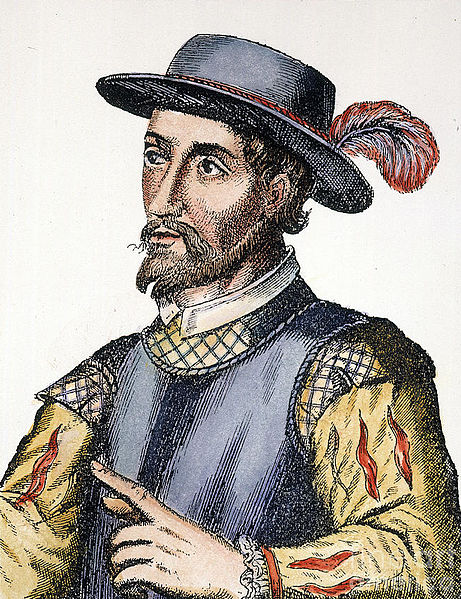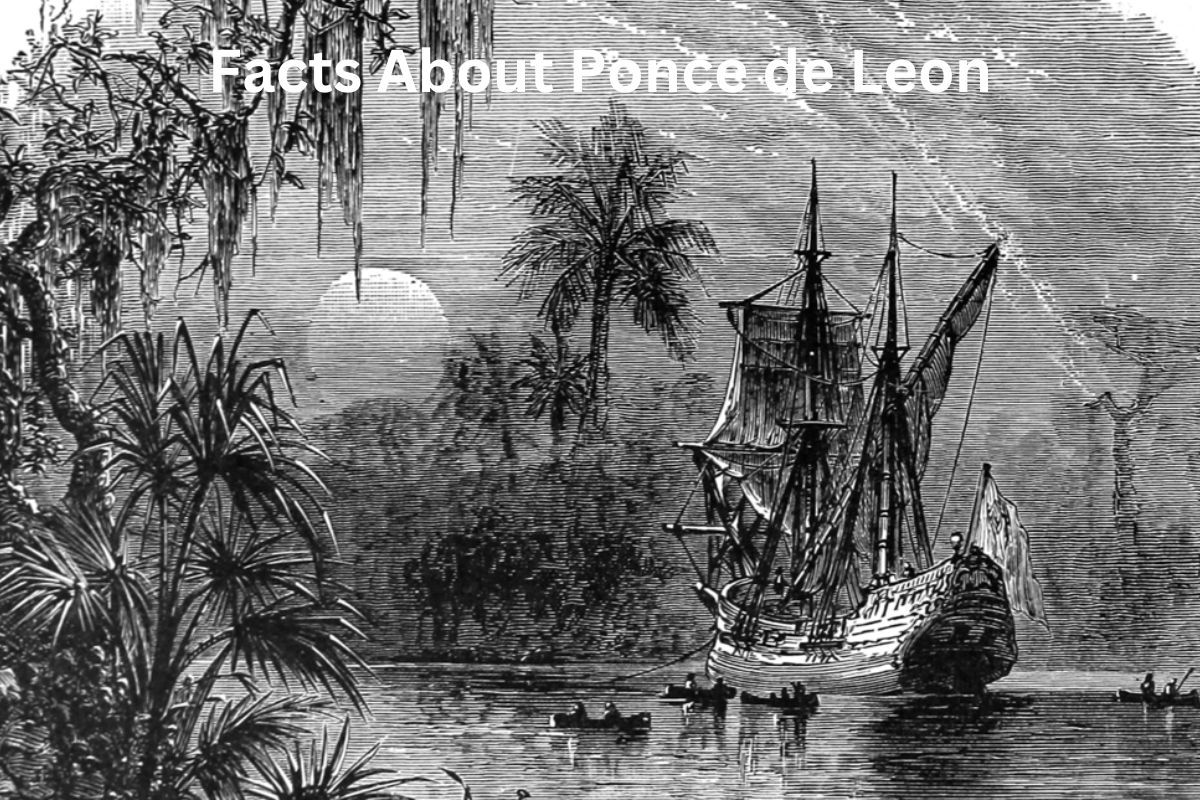Juan Ponce de León is well known for his search for the Fountain of Youth, a mythological fountain thought to have healing properties that may reverse the aging process.
While he is most famous for his role as a Spanish explorer and conquistador who established settlements in Puerto Rico and was the first European to explore Florida, he is also known for his role as a Spanish explorer and conquistador who established settlements in Puerto Rico and was the first European to explore Florida.
Ponce de León was also infamous for his cruelty to the indigenous peoples he met on his voyages. He enslaved Puerto Rican Taino people and forced them to work in gold mines and other labor-intensive enterprises.
In Florida, he encountered opposition from the Calusa tribe and engaged in multiple fights with them, killing many Native Americans.
Ponce de Leon Facts
1. He was born in Castile, Spain
In the year 1474, Juan Ponce de León was born in the quaint community of Santervas de Campos, which is located in the province of Valladolid in the Spanish region of Castile.
Also Read: Henry Hudson Facts
He was nurtured in an affluent household and was born into a family of high social standing. Before enlisting in the Spanish military at the age of 20, he began his career as a young man by working as a page in the court of Aragon.
2. He spent his youth working as a page in the court of Aragon
Ponce de León spent his youth working as a page in the court of Aragon. It was there that he gained valuable talents such as riding, swordsmanship, and etiquette. He is credited with discovering the New World.

He joined the Spanish troops when he was 20 years old and took part in the Spanish war to take Granada, which was the last Muslim bastion in Spain.
Also Read: Juan Ponce de Leon Accomplishments
Ponce de León’s rise through the ranks was lightning fast, and he earned a reputation for his bravery and ability to lead others on the battlefield almost immediately.
His career in the military would eventually take him to the New World, where he would make substantial contributions to the exploration and colonization of the Americas by the Spanish.
3. Juan Ponce de León went to the Americas with Christopher Columbus on the his second trip
In 1493, Juan Ponce de León went to the Americas with Christopher Columbus on the explorer’s second trip to the continent. Ponce de León served as a young aristocrat in Columbus’ crew during this trip.
In later years, he would make a number of trips back to the Americas, one of which was to hold the position of governor over the eastern part of Hispaniola, which is now the Dominican Republic.
Also Read: Facts About John Cabot
In this capacity, he was responsible for the establishment of a number of villages and was an important contributor to the Spanish colonization of the Caribbean region.
His time spent on Hispaniola would prove to be invaluable preparation for the exploration and colonization efforts he would later undertake in Puerto Rico and Florida.
4. Ponce de León was the first governor of Puerto Rico
In the year 1508, Ponce de León received authorization from the Spanish crown to explore and establish the island that would later be known as Puerto Rico.
Also Read: Juan Ponce de Leon Timeline
He was the first governor of the territory and was responsible for founding the first settlement on the island, which he named Caparra. Ponce de León was given the mission to establish a Spanish presence on the island while also bringing the native Taino inhabitants under Spanish control.
He did this using a combination of military might and diplomacy, which ultimately resulted in him gaining possession of the island and establishing a prosperous colony there.
As a result of his leadership in Puerto Rico, the Spanish crown would eventually favor him, and he would be better prepared for his subsequent trips to Florida.
5. In 1513 he traveled to what is now known as Florida
Ponce de León embarked on an expedition in 1513 to investigate and potentially conquer the territory that is now known as Florida. While it is commonly assumed that he went looking for the Fountain of Youth, the precise aim of his voyage remains unknown.
Also Read: Timeline of Florida’s History
Regardless of his reasons, Ponce de León landed on Florida’s east coast and dubbed the area “La Florida,” which translates as “place of flowers.” He spent several months exploring the area, meeting various Native American tribes and discovering many new plant and animal species.
He also made friends with several of the tribes he encountered and claimed the country for the Spanish crown. While his efforts to create a colony in Florida were eventually futile, his mission made an important contribution to the discovery and colonization of the Americas.
6. He died in Cuba
Ponce de León attempted to establish a colony in Florida again in 1521. He landed on Florida’s west coast, at Charlotte Harbor, and began exploring and establishing a town.
Unfortunately, he was met with tremendous opposition from the Calusa tribe, which attacked his expedition and wounded Ponce de León in combat. The expedition was forced to retire, and Ponce de León was brought to Cuba, where he died a few months later from his injuries.
His death effectively ended his desire to settle Florida and cemented his place in the annals of Spanish exploration and colonization of the Americas.
7. Ponce de León was notorious for his cruelty to indigenous peoples
Regrettably, Ponce de León was notorious for his cruelty to indigenous peoples he encountered during his voyages and conquests, especially the Taino people of Puerto Rico. He enslaved the Tainos and made them work in gold mines and other labor-intensive jobs.
He also employed force to suppress native populations in other areas he explored, including Florida. Ponce de León’s activities were typical of European explorers and conquistadors of the time, who tried to establish supremacy over native communities and plunder important resources from the territories they acquired.
His treatment of the indigenous peoples he encountered, on the other hand, is a stain on his reputation and a reminder of the horrific repercussions of European colonization of the Americas.
8. Juan Ponce de León became extremely wealthy from his expeditions
Juan Ponce de León was also well-known for his wealth, which he accumulated through expeditions and conquests. He was especially successful in his expeditions of Puerto Rico, where he collected a sizable fortune in gold and other riches.
This fortune enabled him to establish himself as a major player in the Spanish colonial administration and to fund his subsequent voyages to Florida. Despite his fortune, Ponce de León later had financial troubles and was compelled to seek royal backing for his undertakings.
His success in collecting wealth through his voyages demonstrates his talent as an explorer and conquistador, but it should be highlighted that his fortune was frequently obtained through the exploitation of native communities and the forced labor of enslaved peoples.
9. He was married twice
Juan Ponce de León had two marriages and multiple children. His first wife, Leonor, was a noblewoman with whom he had three daughters.
Ponce de León married Inés de Bobadilla after Leonor died, and they had several additional children.
His ancestors rose to prominence in Spanish colonial society, with some becoming governors of Puerto Rico and other parts of the Spanish Empire.
10. He was a devout Catholic
Juan Ponce de León was a fervent Catholic who took part in a number of religious journeys and conquests during his lifetime. He belonged to the Order of Calatrava, a military religious organization that was crucial to the Spanish Reconquista and later exploration and colonization of the Americas.
Ponce de León took involved in a number of religious expeditions and conquests in the Americas, notably the subjugation of the Taino people of Puerto Rico, which was frequently justified by a desire to promote the Christian faith.
In addition, he funded the construction of several churches and other religious structures in the areas he explored and conquered. His faith was central to his life and expeditions, and he was well-known for his piety and commitment to the Catholic Church.
